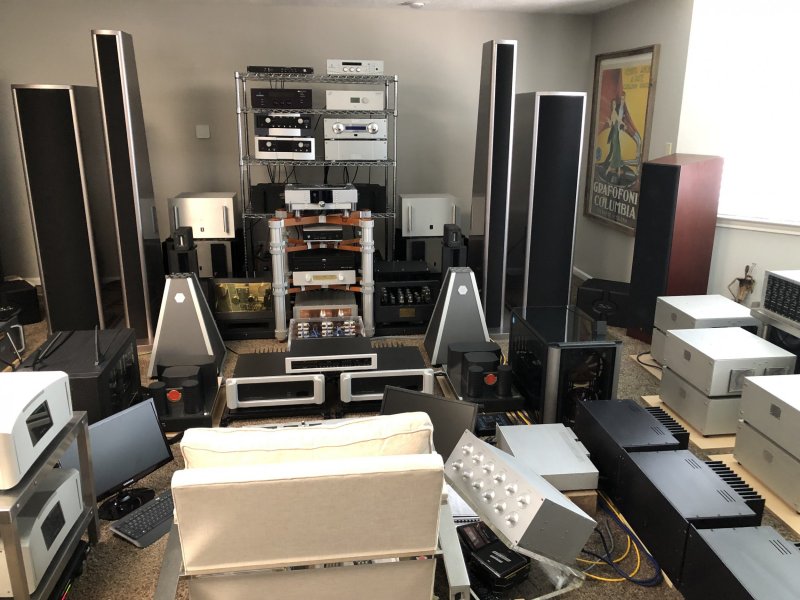And I bought a Dartzeel NHB108 instead of a Luxman and could not be happier. One of the best audio purchase I made.
Since my speakers are designes to biamp, I was tacitly thinking of getting another NHB108 Model 1. I don't have the $ now and I would want to hear from people more in the know if I would gain much.
Rex,
I guess this to some degree depends on the speaker system. I have bi-amped a few systems I have owned both with an electonic crossover and vertically without a crossover. I am really wanting to try, and I will coming up fairly soon, biamping the Divin Noblesse virtically with two CH Precision M-10 stereo amplifiers. This is relatively easy to do in this case with one amp for each speaker all you need is a few more cables to make it happen and since the amps are identical there are no issues with amp sound and gain differences.
I have done this in the past with speakers and IMO the result was always positive. When using different amps and a crossover the process is far more complex and the results don't always do what you hoped for. As they say the juice ain't worth the squeeze.
I also believe that learning from an expert is always a good path to start your journey. Its a good idea to do some research before you start any expensive process. I always try to find from who or where I should buy before I start trying to figure out what I want to buy. I will use a different product so as not to offend anyone.
I have been an avid golfer on and off most of my adult life. At times playing more and for a period of time playing less. Since I have moved to Florida in the 90's I have been more serious and played more simply becuase I can and I love it. I have been caught up in the buying of new gear over a period of time, being influenced by all the commercials and endorsements and since clubs are not crazy money the changing was only painful to my game and not as much to my wallet. I had been "fitted" for clubs at big box stores twice and the process was total BS. They just wanted to sell me stuff so they did a par t of the process as if it was the whole process. Three years ago I did a bunch of research to find out where to get a real fitting, A fitting I had to pay for whether I bought or not, a fitting that took a few hours, afitting with the latest of technology and a fitting that was not brand oriented. I did that, it was incredibly interesting to see how the clubs and even more so the golf shafts made such big differences in what I was able to do. The thing that was most important it was it was specific to me and me alone. I wont bore you with the entire process but a the end it started me on a real path to lowering my scores and really enjoying the game more. I still spent money, in fact more at first, but much less as I continued.
In audio I see so many pictures of rooms, visit rooms at dealers, consumers, shows etc. FOr the most part they are not done correctly and yet in many instances those who own them sware that they have the secret and the proper path to doing it right.I can't tell you how many clients have said to me that their system smokes the ____________ fill in the blank and when I got to experience it it just was a huge DUD.
Anyone is entitled to like whatever it is they want, there are no scores here and it is really hard to measure success when everyone claims expertise however if you don't know or even if you think you do it might be worth the price to once hire an expert, these are researchable, and see after thier visit if your results have improved. In a world of 5/6 figure components a visit from a seriously experienced person with a great track record might change your outlook. BTW there is not one expert for everything either. Mkae sure you choose wisely Grasshopper.
I have had many experiences and a few really great teachers however I do know there is much to still learn and experience.







